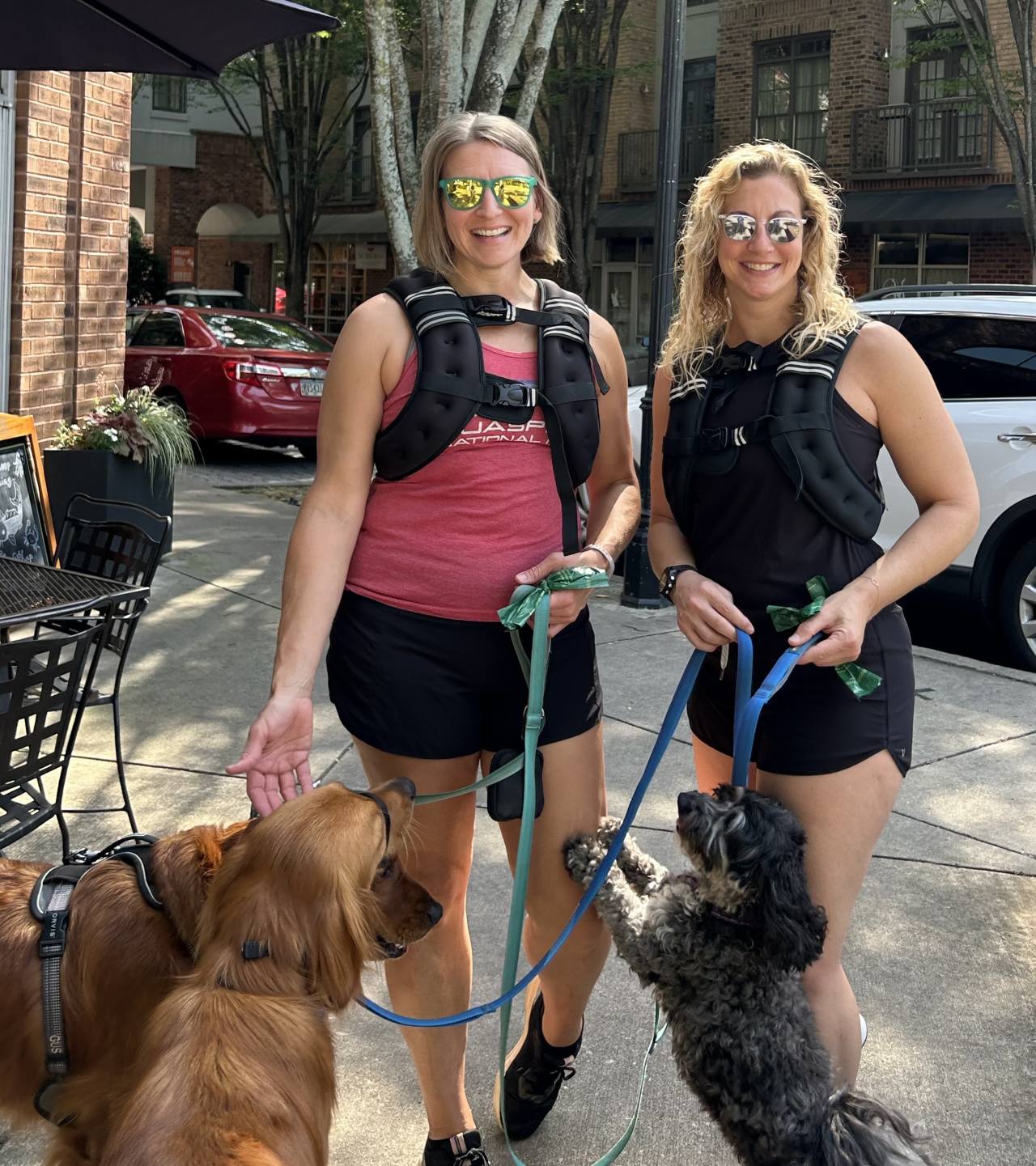Do Weighted Vests Live Up to the Hype?

It’s not often that we intentionally add extra body weight. But the latest fitness fad encourages it: Meet the weighted vest.
You’ve probably seen them in your neighborhood, on power-walking pros out and about at the crack of dawn. That’s my neighbor and me.
For the past month, we’ve been sneaking out in the early morning—she in a Navy SEAL-worthy vest and me in one that looks like an ill-fitting lifejacket—as we supercharge our morning walk. I duck across the street in a baseball cap to oblige my 11-year-old’s plea to avoid her bus stop.
A fad, yes. Fashionable? Not so much.
So what are these weighted vests actually doing for us? I set out to find out.
The vests have been around for decades, but were traditionally associated more with military training or CrossFit workouts. They have broadened their appeal, showing up on everyone from actress Jessica Alba to news anchor Katie Couric. They have grown particularly popular with middle-aged women.
When used correctly, the vests can enhance your cardiovascular workout. The benefits ramp up at weights of at least 10% of your body weight. But they’re not a substitute for traditional resistance training.
So how many more calories can you burn wearing a weighted vest?
If you wear one equal to 10% of your body weight, it will burn an additional 8.5% calories, says Dave Looney, an exercise physiologist at CoachMePlus who has researched weighted vests for the U.S. Army. With a vest that is 20% or 30% of your body weight, that number jumps to 19.7% and 32.2%, respectively.
Weight vests can also boost endurance in stabilizing muscles, says Looney. They work your back, shoulders, abs and lower body, he says.
For running and high-intensity workouts, keep your vest weighted at 10% to 20% of body weight, and make sure it isn’t affecting your normal range of motion, he says.
It’s OK to start with a light vest, but getting an adjustable one is recommended, so you can increase the weight. Wearing a vest that’s only 5% of your body weight doesn’t have a metabolic benefit, says Troy Purdom, an assistant professor of kinesiology at North Carolina Agricultural and Technical State University, in Greensboro, who conducts research on weighted vests.
His research has found that weighted vests can help with running performance . Recreational runners shaved more than 15 seconds off a 5K when warming up with a 10% body-weight vest for 20 minutes prior to the race.
But be careful: Wearing a vest during really intense or long workouts can lead to posture issues or a greater risk of injury as muscles fatigue, Purdom says.
And always consult a doctor before trying a weighted vest if you have back, shoulder or other orthopaedic issues.
Weighted vests aren’t only for younger, fitter generations. They are also beneficial for older people, especially postmenopausal women, who have a higher risk of developing osteoporosis and suffering from bone loss and fractures.
That’s because studies suggest weighted vests can help prevent or reduce bone-density loss. That’s what drew Lauren Gleason, a 40-year-old dietitian in Decatur, Ga., to try one.
“Bone health has been a personal priority for me,” she says. “My grandmother broke her hip at my parents’ wedding.”
She wears an 18-pound vest while doing lunges and push-ups. “It really helps,” she says. “I used to struggle to get to 10 regular push-ups. With the vest I do sets of five and without it I can easily do 15 push-ups.”
A lot of the studies done on the impact of weighted vests on bone density have been done in older adults who are naturally losing muscle and bone density.
“Weighted vests can be helpful at maintaining—even in promoting—gains in musculoskeletal health, like improving strength or balance, or even bone density in a weight-stable state,” says Kristen Beavers, a professor of internal medicine at Wake Forest University School of Medicine.
Still, Roger Fielding, a senior scientist at Tufts University, says evidence on bone density isn’t conclusive. He notes bone density changes over months to years. “So those changes would take a long time,” he says.
While vests add resistance to cardio, they don’t replace focused strength-training like dumbbell or body-weight exercises, Fielding says.
So how long should you wear a weighted vest? Most of the studies include wearing it on average an hour a day for three days a week, Beavers says.
That’s exactly what Sarah Adle, a 47-year-old attorney, does. She wears a 16-pound vest with friends on regular power walks. “We plan our walks—is it going to be a vest walk, or a nonvest walk,” she says.
She will walk up to an hour with the vest. “I hurt myself and stopped running, and I didn’t feel like just walking around the neighborhood was enough,” she says. “This feels like a good supplement.”
And me? A month into my weighted-vest walks, I’m feeling less self-conscious. I’ve ditched the fleece I used to hide the vest with when passing through busier parts of our neighborhood.
Now, when I walk without the vest, I’m moving at a noticeably faster clip. I’m ready to upgrade to an adjustable weighted version so I can add more weight.
I may even spring for one with full coverage, like my neighbor’s, so we can match as we march through the neighborhood, commando-style.
Write to Sumathi Reddy at Sumathi.Reddy@wsj.com
Post a Comment for "Do Weighted Vests Live Up to the Hype?"
Post a Comment